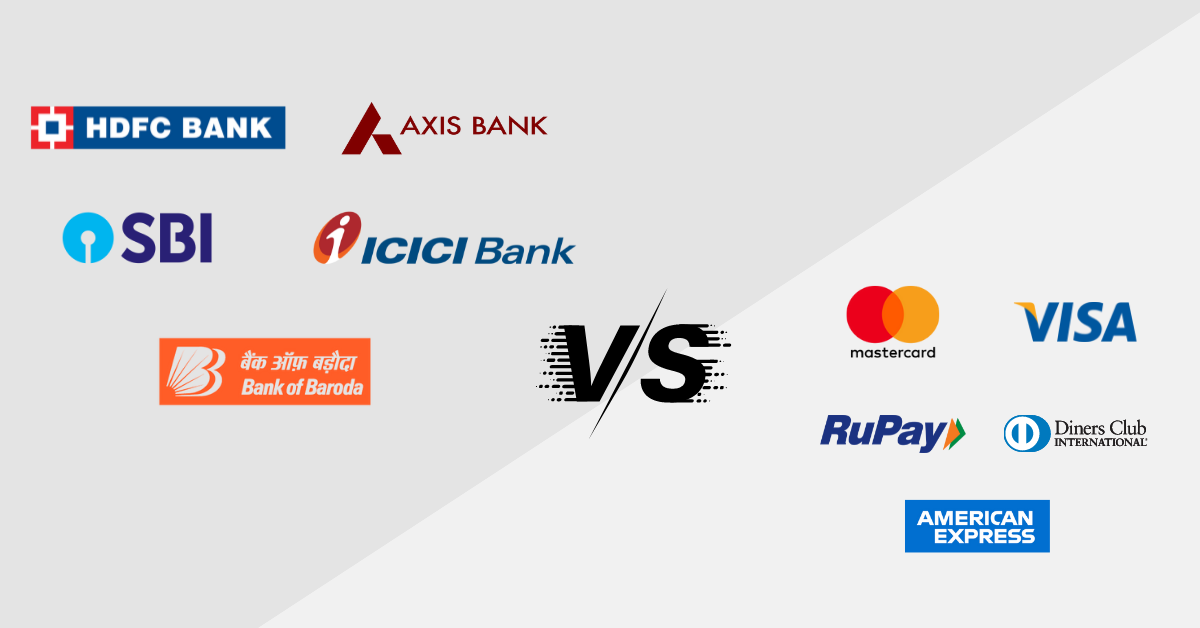A lot of individuals are not aware of the term ‘Credit Card Network’ and even the people who have heard the term often misunderstand it. They think that a card network is the same as a card issuer, but that is one of the biggest misunderstandings cardholders may have. A credit card issuer is an entirely different body from the card network. It is true that both of them play crucial roles in working on a credit card, but their functions are different. To make it a bit easier for you, let us make you understand how you can recognize the card issuer and card network from a credit card. On a credit card, you will see a card issuer’s logo which is generally on the top right or left corner of the card, like ICICI Bank, HDFC Bank, SBI Card, etc. The logo of the card network can be found at the bottom right corner of the card and these include, Visa, Mastercard, Diners Club, etc.

In this article, we will make you understand what are the functions of a credit card issuer and card network separately and how they work in collaboration. Keep reading for more information:
What is a Card Issuer?
A card issuer is a bank or a non-banking financial company that offers credit cards and limits to their customers. So, it is actually your card issuer from which you are borrowing money. When you apply for a credit card, the card issuer checks your credit score in order to approve or reject your application. If the application gets approved, the credit card is sent to the applicant and he is provided with a credit limit, which can vary for all customers. Moreover, most of the features and benefits you get with your credit card are also provided by your card issuer.
The fees & charges and other terms & conditions associated with the credit cards are also decided by the card issuer. Some of the most popular credit card issuers in the country include HDFC Bank, American Express, ICICI Bank, SBI Card, Axis Bank, IDFC First Bank, Punjab National Bank, etc.
What is a Credit Card Network?
In the functioning of credit cards, the card networks can be considered the behind the scene heroes who work as an intermediary between the card issuers and the merchants to process the payments successfully. Your credit card network is the one that decides where your card can be accepted and where not. When you swipe a credit card at a store, it is the credit card network that works within seconds to process your payments.
Some of the major card networks in India are Visa, MasterCard, RuPay, and Diners Club. These networks have almost the same functions and the difference is only in their names and logos. However, all these networks are not accepted by all the merchants. Some merchants only accept Visa & Mastercard and there might be others who accept RuPay Cards only. Moreover, they might have their own terms & conditions and advantages. For example, Visa and Mastercard, being the major credit card networks, have their own lounge access programs named, Visa Lounge Access Program & MasterCard Lounge Program. Under these programs, the respective cardholders can access the airport lounges across India and outside as well.
Difference Between Credit Card Issuer and Network
With the following table, it will be easier for you to understand the difference between a card issuer and a card network:
| Credit Card Issuer | Card Network |
|
|
How do Credit Card Issuers and Card Networks Work Together?
Though credit card issuers and networks have different functions, what they work for is to let the cardholder make transactions via a credit card successfully. The following steps will make you understand how they work together to make a transaction successful:
– A credit cardholder swipes the card at a merchant store.
– The merchant sends the card details to the payment processing infrastructures created by the card network.
– Then the details are sent further to the card network.
– The card network contacts the card issuer in order to authorize the payments.
– If the card issuer approves the transaction, it is completed, and if not, the transaction is rejected.
Bottom Line
Understanding the difference between card issuers and card networks becomes essential as it helps you avail yourself of all the benefits of a credit card. Also, you will be aware of where you can use your credit card and where not. Though MasterCard, which is one of the popular card networks in the country, has been banned by RBI, the cards that were issued before the ban are still being accepted by most merchants in India.









